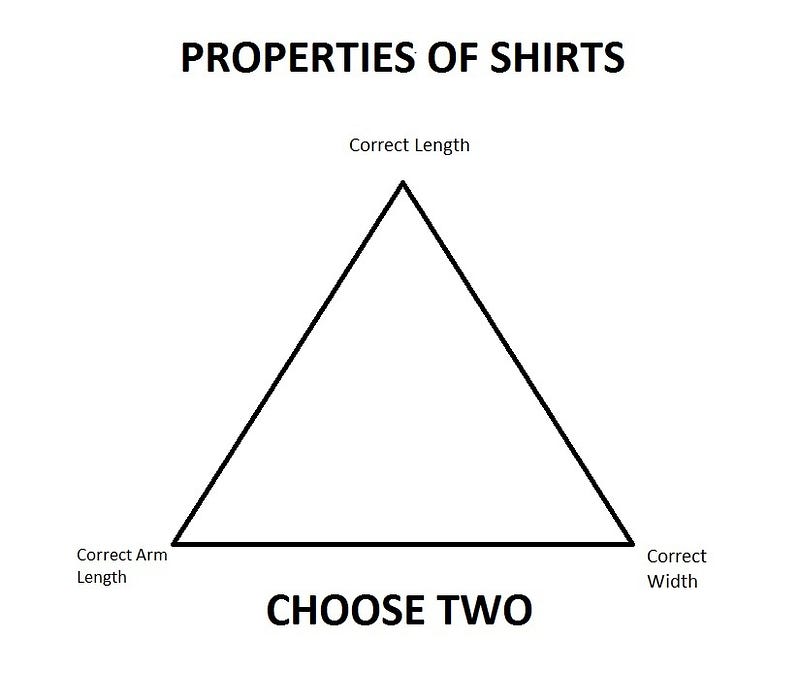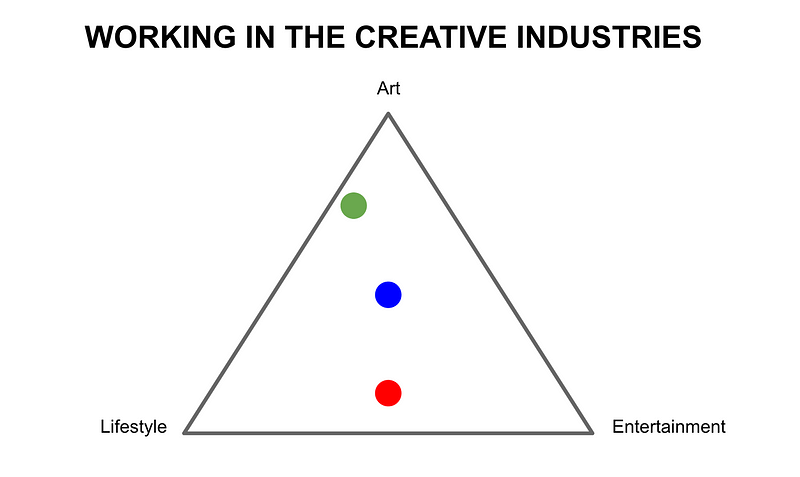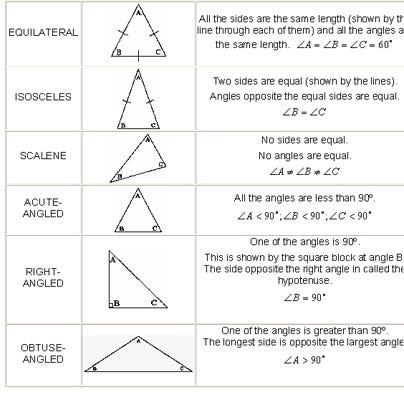Finding out with three lines, a few dots, and a long-sleeved shirt
Note: I found this post in my drafts today as I was looking for the shirt diagram. This post originates from May 2015. Even though some of my thinking has evolved since then I’ve decided to publish it in its original form.
Storage Solutions
When I moved into my current flat, clothes storage became a hot topic of conversation (I’m of that age now…).
The bedroom’s long and fairly narrow shape meant we needed to utilise height. We didn’t want to default to Ikea, and a lovely hand-crafted wardrobe was a little out of budget.
After much deliberation, a shopfitters’ storage rack was purchased; floor to ceiling on castors, with three shelves and two rails for jackets, trousers and of course shirts.
Once assembly was complete (slightly quicker than an Ikea nightmare build, but only just), I loaded everything on board only to find I had a surplus.
We’d vowed to keep the new place bereft of clutter, so I started working through everything, culling anything that had been on the substitute’s bench for more than 6 months.
When it came to the pile of shirts I’d rapidly thrown into a bag on moving day, I was shocked to discover that nearly half were either too long, some too wide (the ‘tent’ look), or with sleeves too short.
The Shirt Dilemma
Months later, long after the ill-advised purchases had been given to a better home, I saw this going around on Twitter;

The next week I was chatting with an associate about the state of the music industry (specifically the electronic/DJ world) and how balancing artistic endeavors with the more business and commercial aspects can be tricky.
As we were talking, the shirt diagram idea popped into my head again (it also feels like it should be a new entry into Peter Kay’s Universal Truths).
I scribbled this new version down when I got back to the office (here’s a digital version as my handwriting is appalling);

I’m not an artist, but I’ve worked with quite a few, and it feels like these three descriptors can be used to frame where an artist is positioned and wants to go in their career. I’ll use the example of an electronic music artist here, but it could arguably be applied to any creative endeavor.
I’ve found this simple drawing really useful for visualising the ecosystem within a particular music genre/scene. As a booking agent it made me think more about the strategy for a certain artist too, and where the focus currently is or needs to be.
The obvious elephant in the room here is money. ‘Entertainment’ could maybe be substituted for ‘commerce’ but I think it skews the idea a bit and the subject of selling out (or not) is for another discussion.
The 3 Pillars
Art: Subjective maybe, but here’s a definition that a quick web search brought back;
the expression or application of human creative skill and imagination, producing works to be appreciated primarily for their beauty or emotional power.
Some people focus on this more than others — either way, for the purpose of this article I’m not going to speculate on what should be considered art and what should not. You can decide that for yourself 😉
Lifestyle: whether personal or with others, being an independent musician/DJ is often a lifestyle choice in itself. Some people may focus on this more than others. The lifestyle aspect also ties into being part of a collective or a movement (there’s a strategy element here too, and in dance music the ‘tribe’ is very important)
Entertainment: It can be argued that the primary job of a DJ is to entertain, ahead of educate. Is a music producer writing from the heart and soul, do they want to be a star and entertain people, or a bit of both?
On the map
I’ve not attached any specific artists to the dots below, but you could probably think of a few that fit.

Is the blue dot the ideal? Balancing a great lifestyle, creating art and entertaining people?
Is the space at the centre of the blue dot even possible to achieve, almost a state of Self-Actualisation?
An interesting exercise may be for an artist to pin where they see themselves on this map, then their fans, managers, promoters, labels, agents and others do the same.
Different angles
I knocked this little model together with an equilateral triangle. Use Isosceles, Scalene or Obtuse triangles and the results start to shift…
The question to ask is – what’s important?

Finding focus and navigating
You could also easily apply this to a festival lineup, film studio’s slate, talent agent’s roster, or just about any business person in the creative industries; where does your focus lie, where are you right now, and where’s the ideal placement for you on the map. How far apart are they?
I applied this to myself and the people I work with, and the results weren’t quite what I expected.
There are of course many other factors to consider when plotting creative and commercial endeavors (and this post certainly over-simplifies to make a point), but maybe this quick little diagram could help you to not lose your shirt in the quest for creative and career success.
Please share this post if you like it, and maybe also share if you don’t… let me know on Twitter (@howardgray), or subscribe to my email list for more chit-chat about careers, creative work and entrepreneurial endeavors.